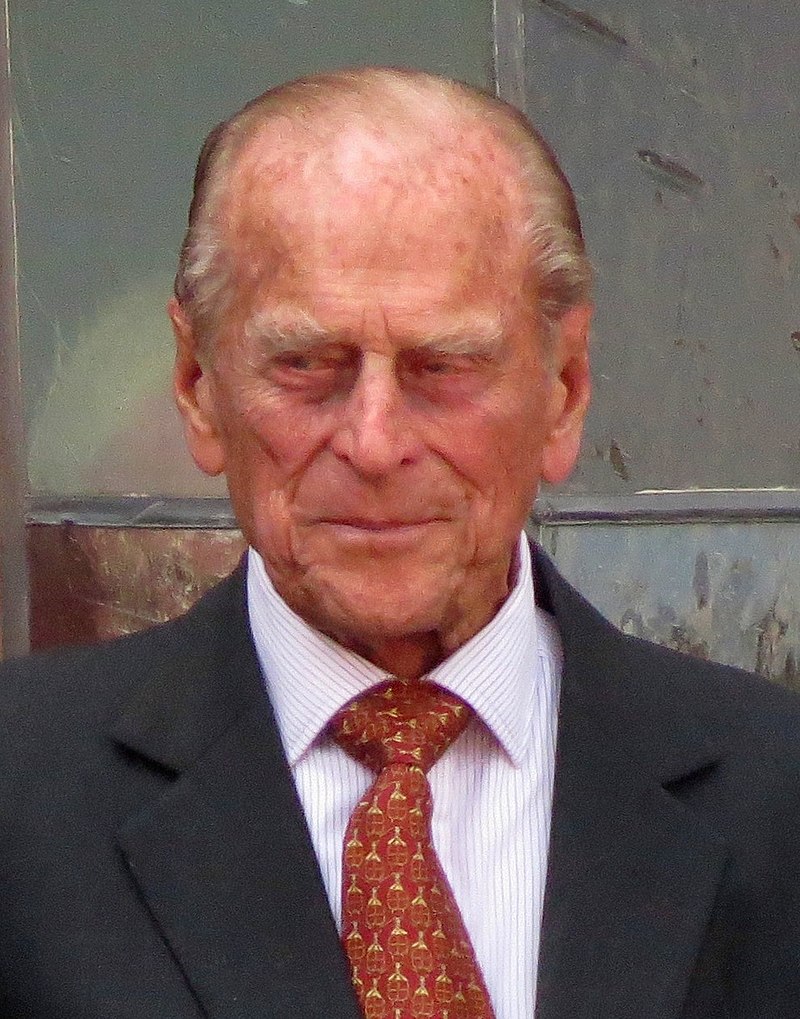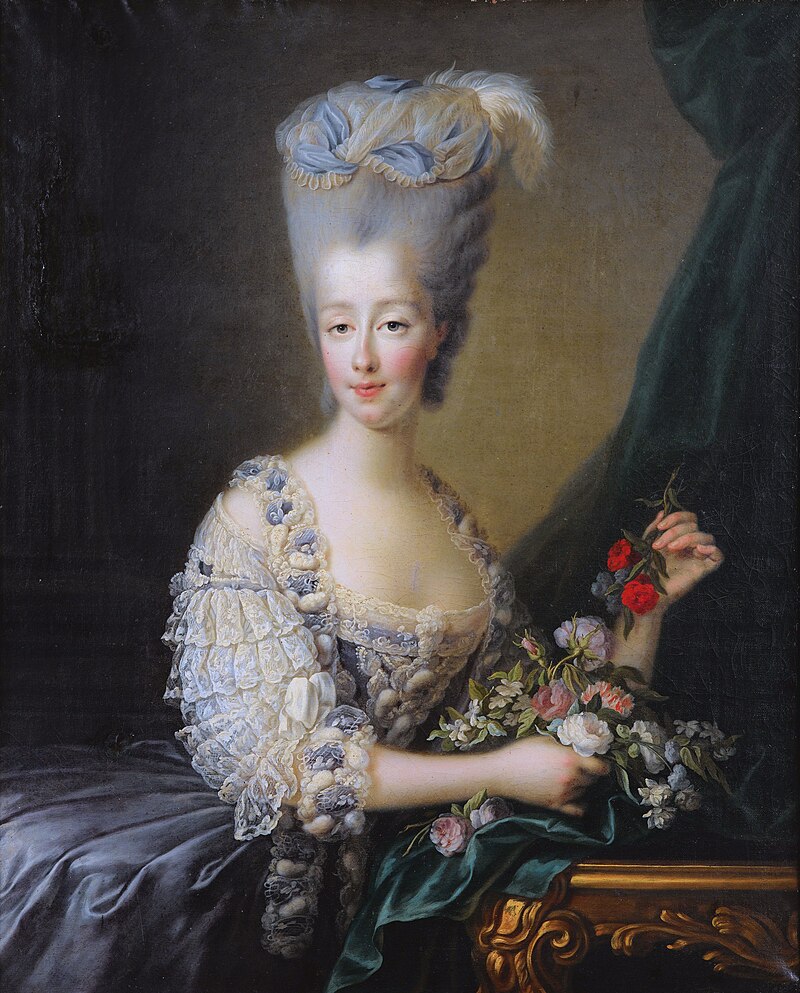© Unofficial Royalty 2024

King George I of Great Britain; Credit – Wikipedia
June 11, 1183 – Death of Henry the Young King, son of King Henry II of England, at Martel Castle in Turenne, France; buried at Rouen Cathedral in Rouen, France
When Henry was 15, his father adopted the French practice of ensuring the succession by declaring his heir the junior king and he was crowned at Westminster Abbey. Despite his rank of junior king, King Henry II refused to grant Henry land or allow him to participate in the government. With his mother Eleanor of Aquitaine and his brothers Richard (the future King Richard I of England) and Geoffrey, he nearly overthrew King Henry II in 1173. In 1182–83, Henry had a falling out with his brother Richard when Richard refused to pay homage to him on the orders of King Henry II. As he was preparing to fight Richard, Henry became ill with dysentery (also called the bloody flux), the scourge of armies for centuries. It was clear that Henry was dying and he repented his sins by prostrating himself naked on the floor before a crucifix. Henry the Young King died holding a ring his father had sent as a sign of his forgiveness for rebelling against him. Henry was so popular that the people of Le Mans and Rouen almost went to war for the custody of his body. He had requested to be buried in Rouen Cathedral, but as his body traveled through Le Mans, the bishop ordered his body to be buried at the cathedral there. The Dean of Rouen Cathedral had to resort to legal means to bury Henry according to his wishes.
Unofficial Royalty: Henry the Young King
June 11, 1456 – Birth of Anne Neville, Queen of England, daughter of Richard Neville, 16th Earl of Warwick, wife of King Richard III of England, at Warwick Castle in Warwick, England
Anne was the wife of Edward of Westminster, Prince of Wales (son of King Henry VI) and the wife of King Richard III. Born Lady Anne Neville, she was the younger of the two daughters of Richard Neville, 16th Earl of Warwick and Lady Anne Beauchamp. Anne’s father, known as “the Kingmaker,” was one of the major players in the Wars of the Roses, originally on the Yorkist side but later switching to the Lancastrian side. Both Anne’s parents were descendants of King Edward III of England.
Unofficial Royalty: Anne Neville, Queen of England
June 11, 1488 – Death of James III, King of Scots, killed in the Battle of Sauchieburn in Scotland; buried at Cambuskenneth Abbey in Stirlingshire, Scotland
James was killed in the Battle of Sauchieburn. The circumstances of James III’s death were greatly exaggerated and romanticized by the 16th-century chroniclers. Supposedly, he was murdered when he went to seek refuge in a cottage shortly after the battle in Milltown near Bannockburn. Most likely, James III, King of Scots had already died on the battlefield.
Unofficial Royalty: James III, King of Scots
June 11, 1560 – Death of Marie of Guise, Queen of Scots, second wife of James V, King of Scots and mother of Mary, Queen of Scots, at Edinburgh Castle in Edinburgh, Scotland; buried at the church in the Convent of Saint-Pierre in Reims, France
On August 7, 1548, five-year-old Mary, Queen of Scots set sail for France where she would be raised with her future husband François, Dauphin of France. She would not return to Scotland for thirteen years. Mary’s mother Marie of Guise remained in Scotland as the principal member of the Council of Regency. 1560, 44-year-old Marie died of dropsy (edema). Marie’s body was embalmed and placed in a lead coffin. It lay in St. Margaret’s Chapel in Edinburgh Castle until March 18, 1561. On that day, the coffin was secretly carried from the castle at midnight and taken to Leith where the coffin was placed onboard a ship bound for France. Mary, Queen of Scots attended her mother’s funeral in France in July 1561.
Unofficial Royalty: Marie of Guise, Queen of Scots
June 11, 1726 – Birth of Maria Teresa Rafaela of Spain, Dauphine of France, 1st wife of Louis, Dauphin of France, the son of Louis XV, King of France, at the Royal Alcazar in Madrid, Spain
In 1744, Maria Teresa married Louis, Dauphin of France, the son of Louis XV, King of France. Maria Teresa Rafaela soon became pregnant. On July 19, 1746, she gave birth to a daughter, named Marie-Thérèse by her husband in honor of his adored wife. Maria Teresa Rafaela initially recovered from childbirth but then her condition deteriorated quickly and she died on July 22, 1746, aged 20, at the Palace of Versailles. Maria Teresa’s husband Louis never succeeded to the French throne. He died of tuberculosis on December 20, 1765, at the age of 36.
Unofficial Royalty: Maria Teresa Rafaela of Spain, Dauphine of France
June 11, 1727 – Death of King George I of Great Britain at the Prince-Bishop’s Palace in the Prince-Bishopric of Osnabrück, now in Lower Saxony, Germany; originally buried at the chapel of Leine Castle in the Electorate of Hanover, now in Lower Saxony, Germany; in 1957, his remains were re-interred at the Berggarten Mausoleum at Schloss Herrenhausen in Hanover, Germany
On June 3, 1727, King George I, also Elector of Hanover, set out for another visit to Hanover. During the journey, George became ill and lost consciousness. It was noticed that his face had become distorted and his right hand hung limply at his side, a sign that he had suffered a stroke. The courtiers decided to continue with the journey to Hanover, where George died in the Prince-Bishop’s Palace in the Prince-Bishopric of Osnabrück. Following the instructions of George’s son, now King George II, George was buried in the chapel at Leineschloss in the Electorate of Hanover. He was the first British monarch since King Richard I in 1199 to be buried outside England. The castle and the chapel were severely damaged during World War II, and in 1957, King George I’s remains were re-interred at the Berggarten Mausoleum at Schloss Herrenhausen in Hanover, Germany, near his mother’s burial site.
Unofficial Royalty: King George I of Great Britain
June 11, 1903 – Assassination of King Alexander I of Serbia and his wife Queen Draga by a military coup d’etat at the Stari Dvor (Old Palace) in Belgrade, Serbia; buried at St. Mark’s Church in Belgrade, Serbia
On June 11, 1903, 26-year-old Alexander I, King of Serbia and his 38-year-old wife Queen Draga were brutally shot, mutilated, and thrown out a window at the Stari Dvor (Old Palace) in Belgrade, Kingdom of Serbia.
Unofficial Royalty: Assassination of King Alexander I and Queen Draga of Serbia
Unofficial Royalty: King Alexander I of Serbia
Unofficial Royalty: Draga Mašin, Queen of Serbia
June 11, 1914 – Death of Adolf Friedrich V, Grand Duke of Mecklenburg-Strelitz in Berlin, Kingdom of Prussia, now in Brandenburg, Germany; buried in the New Crypt at the Johanniterkirche in Mirow, Grand Duchy of Mecklenburg-Strelitz, now in Mecklenburg-Vorpommern, Germany
A great-grandson of King George III of the United Kingdom, Adolf Friedrich was 14th in line of succession to the British throne at the time of his birth. He was the highest-ranking person in the British succession who did not hold any British titles. Adolf Friedrich was the heir apparent to the throne of Mecklenburg-Strelitz for 43 years and succeeded to the Grand Ducal throne on May 30, 1904, following his father’s death. His reign lasted for only ten years. In March 1914, the Grand Duke fell ill and underwent an operation in a private hospital in Berlin, Kingdom of Prussia, now in the German state of Brandenburg. He never fully recovered and died at the hospital.
Unofficial Royalty: Adolf Friedrich V, Grand Duke of Mecklenburg-Strelitz
June 11, 1928 – Birth of Queen Fabiola of Belgium, wife of King Baudouin of the Belgians, born Fabiola de Mora y Aragón in Madrid, Spain
Full name: Fabiola Fernanda Maria de las Victorias Antonia Adelaida
Born to a Spanish aristocratic family, Fabiola was the fifth of the six children of Gonzalo de Mora y Fernández, Riera y del Olmo, 4th Marquess of Casa Riera, 2nd Count of Mora and his wife Blanca de Aragón y Carrillo de Albornoz, Barroeta-Aldamar y Elío. Queen Victoria Eugenie of Spain, a granddaughter of Queen Victoria, was her godmother. In 1960, Fabiola married King Baudouin of the Belgians, who had been king since his father King Leopold III abdicated in 1951. Unfortunately, King Baudouin and Queen Fabiola lost five children to miscarriages and never had children. On December 5, 2014, Queen Fabiola died and was buried with her husband at the Church of Our Lady of Laeken.
Unofficial Royalty: Queen Fabiola of Belgium
June 11, 1934 – Birth of Prince Henrik of Denmark, husband of Queen Margrethe II of Denmark, born Count Henri de Laborde de Monpezat in Talence, Gironde, France
Full name: Henri Marie Jean André
Prince Henrik’s parents were members of the French nobility. After a brief stint in the military, Henrik entered the French foreign services. At the time he met Princess Margrethe of Denmark, the eldest of the three daughters of King Frederik IX of Denmark in 1965, Henri was working as the third secretary at the French embassy in the Department of Oriental Affairs in London. On June 10, 1967, Princess Margrethe married Henrik at the Holmens Kirke in Copenhagen, Denmark. The couple had two sons. Later in life, Henrik suffered from dementia. he died peacefully in his sleep on February 13, 2018, at the age of 83.
Unofficial Royalty: Prince Henrik of Denmark
June 11, 1968 – Birth of Hereditary Prince Alois of Liechtenstein, son of Prince Hans-Adam II of Liechtenstein, in Zurich, Switzerland
Full name: Alois Philipp Maria
Alois is the eldest son of Prince Hans-Adam II. At the time of his father’s accession in 1989, he became The Hereditary Prince of Liechtenstein. In 1993, Alois married Duchess Sophie in Bavaria and the couple had four children. Alois works for the Prince of Liechtenstein Foundation, which oversees and manages the various assets of the Princely Family. In 2004, Prince Hans-Adam II appointed Alois as his “permanent representative for exercising the sovereign powers due to him, in preparation for his succession to the throne.” Alois now performs all his father’s duties both within the principality and internationally, however, Hans-Adam remains Head-of-State.
Unofficial Royalty: Hereditary Prince Alois of Liechtenstein
This article is the intellectual property of Unofficial Royalty and is NOT TO BE COPIED, EDITED, OR POSTED IN ANY FORM ON ANOTHER WEBSITE under any circumstances. It is permissible to use a link that directs to Unofficial Royalty.









